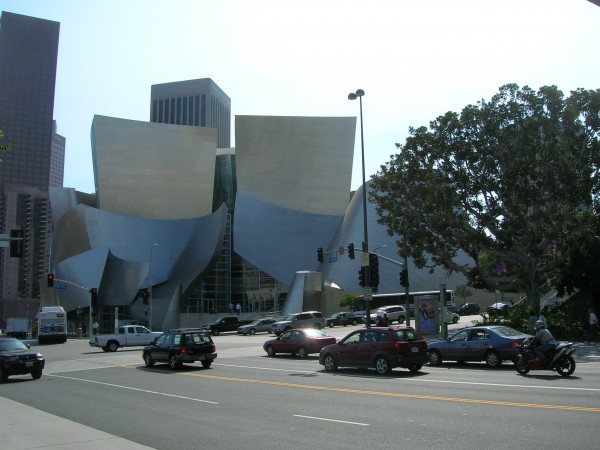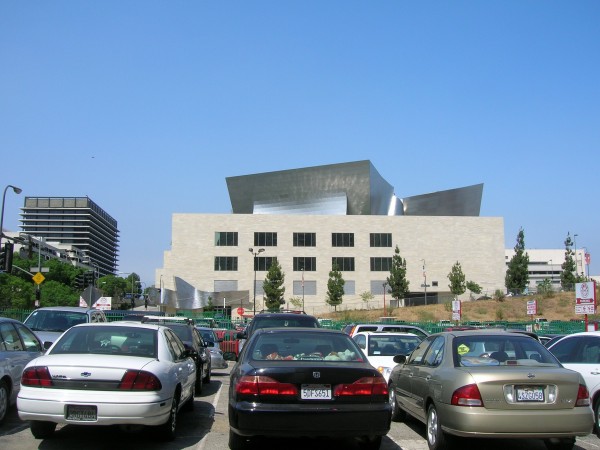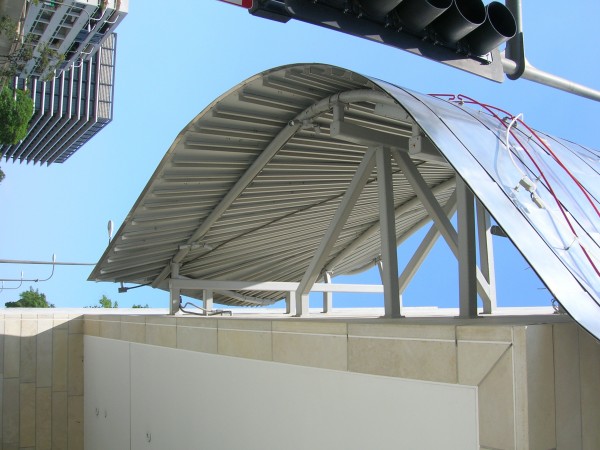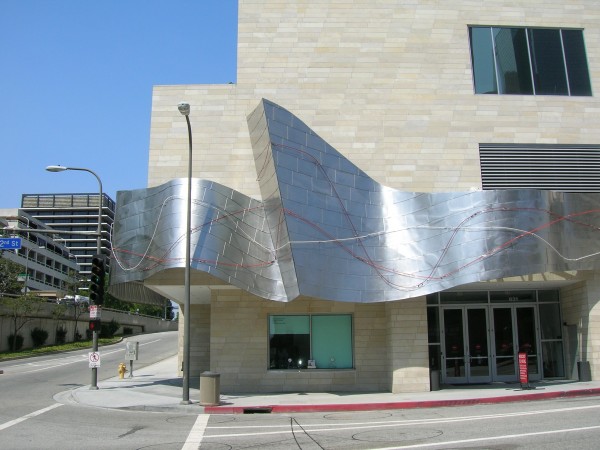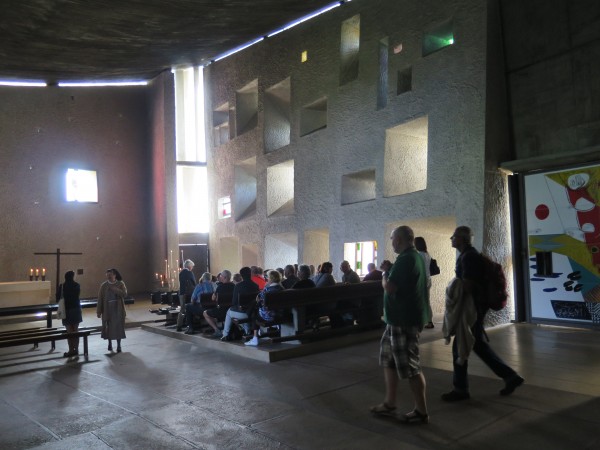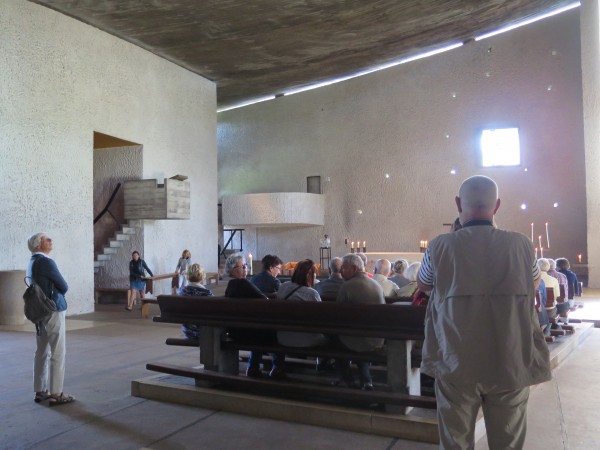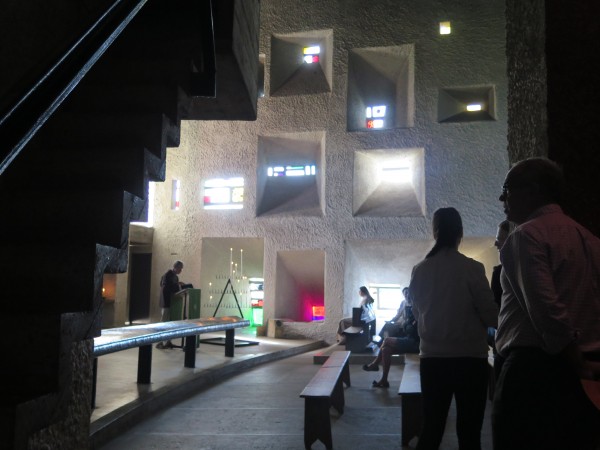The current retrospective of Frank Gehry’s career organized by the Centre Pompidou, Musée National d’Art Moderne, Paris, in association with the Los Angeles County Museum, is on view at LACMA until March 20, 2016. It is clearly a “must see” for anyone interested in architecture, design, urban planning and advancing technology.
The Centre Pompidou, with a long record of creating exhibitions that are often heavier on intellectual content than visual stimulation, has provided us (supplemented by LACMA in cooperation with Gehry’s office) with a visually stimulating and intellectually challenging exhibition – the most comprehensive review ever presented of Frank Gehry’s career, dating from the opening of his first architectural office in 1962 to the present day. Given the scope of the exhibition, it affords the opportunity to review the totality of his oeuvre and to make both particular observations and comprehensive assessments.
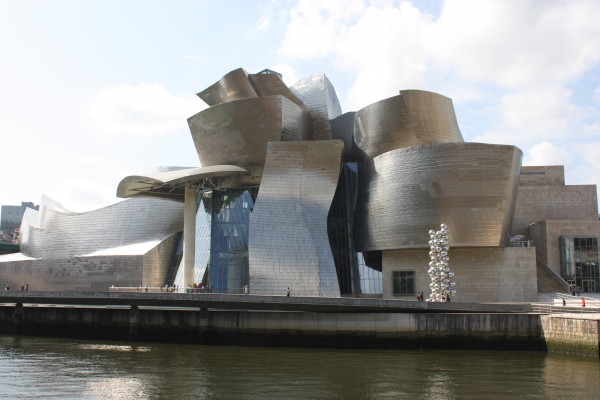
Already an architect with an esteemed reputation, it was his 1991-1997 Guggenheim Museum in Bilbao, Spain (he won the competition) that catapulted him to international prominence. It is probably the most famous structure built in the last half of the twentieth century and transformed the way that architects planned and designed buildings. Beyond its architectural merits, the building was a huge economic generator for the city of Bilbao which until that time had been an undistinguished fading Spanish industrial city on the north coast of the Basque region facing the Bay of Biscay.
The museum’s success created a phenomenon, “The Bilbao Effect,” in which other cities utilized innovative architecture with the hope that it would rejuvenate sluggish museums and moribund cities. Never content to work with conventional building materials, nor dedicated to following the prevalent two thousand year old conventions of architectural design, Gehry wanted to explore the architectural potentials of new industrial materials and processes. Consequently, in the late 1980s, he worked in association with Dassault Systèmes to adapt their CATIA (Computer Aided Three-Dimensional Interactive Application), which had been developed for the automotive and aeronautical industries to applications for architectural design and construction. The Bilbao Guggenheim manifests his adaptation of this technology to architectural design. This revolutionary methodology is clarified in a video created by the Centre Pompidou for the technology section of this exhibition. Here it is possible to see how the character of the material and the process by which it is manipulated creates shapes and forms that define the final design of his buildings.
As a reaction to the rigid geometrical boxes that followed in the footsteps of Mies van der Rohe, a group of architects established a style that they designated as Post-Modernism, creating conventional buildings wrapped in skins of nostalgia. Frank Gehry was never a member of this tribe; however, he might be the first and only Post-Modernist architect because he crowned his traditional structures with metal hats created by using new and non-traditional industrial products and processes.
The Scorecard
Having been exposed to Frank Gehry’s work in different locations over a number of years, here’s my scorecard.
American Center in Paris, 1994
I attended the opening of what turned out to be a failed project for the sponsors and the architect. Ill-conceived, it was located in the off-the-beaten track industrial neighborhood of Bercy which was awaiting revival. With poor public transportation and being restricted by Parisian height and design laws, it became a white elephant never serving a constructive purpose nor building an audience. The problems were created by the client, not the architect.
The Art of the Motorcycle, Guggenheim Museum, New York, 1998
In a spectacular manner, more than 130 motorcycles were arranged chronologically around the museum’s spiral interior.
Guggenheim on the East River, 2001
Presented at the uptown Guggenheim, this was another one of then Director, Tom Kren’s egomaniacal dreams. Frank Gehry provided a stunning model for the proposed development of the site. Corollaries to this exhibition were: a chronological display of models of Ghery’s designs for other buildings situated around the spiral and a scale model of the Bilbao Guggenheim alongside the East River project.
Experience Music Project, Seattle, 2003
Conceived by Microsoft billionaire Paul Allen, I found the message of the interior displays (Gehry was not involved) to be confusing and irrelevant. I was perplexed by the design of the building; the exterior was a combination of extravagant shapes and the interior was a conventional display space unrelated to the exterior.
Richard B. Fisher Center for the Performing Arts, Bard College, Annandale-On-Hudson, New York, 2003
Here, a convoluted metal hat rests on a traditional performing arts structure with excellent acoustics.
The Cosmopolitan Observer (Personal Blog) December 13, 2013, “An Exquisite Calder Exhibition. Wednesday, December 4, 2013
“Since arriving in Los Angeles in January 2010, my visit today to the current Alexander Calder exhibition at LACMA was one of the most satisfying museum experiences that I have had here. It is a combination of great art presented intelligently in a well-designed and sympathetic environment. Stephanie Barron of the LACMA staff was curator and Frank Gehry was exhibition designer. With approximately fifty works on display, it offers an abbreviated presentation of this artist’s work. It does not purport to be a retrospective and draws heavily on the Calder Foundation for loans.”
Theory and Practice
Despite his universal acclaim, I have always been troubled by what appeared to be an inconsistency between theory and practice. The flamboyant metal shapes that are common in many of his buildings function more as attachments to traditional architectural boxes rather than spatially defining elements. The following photographs of the Walt Disney Hall in Los Angeles describe my observation that Gehry’s unconventional designs demonstrate a stylistic inconsistency that follows in the wake of his embracing CATIA technology. I don’t see a correlation between a rectangular or square structure, its modulated metal roof hat and attached metal shapes.
(All Walt Disney Concert Hall, Los Angeles photos/ Credit: Allon Schoener)
In contrast, I offer photographs of Le Corbusier’s Chapelle Notre Dame au Haut, Ronchamp, France, 1950-1955. The main part of this structure consists of two concrete membranes forming a shell – the roof of the building. The walls, without buttresses, follow these curvilinear forms. They support the roof and provide stability. To enter this sanctuary, is a life-long memorable experience equaling that of being present in the main sanctuary of Notre Dame Cathedral in Paris.
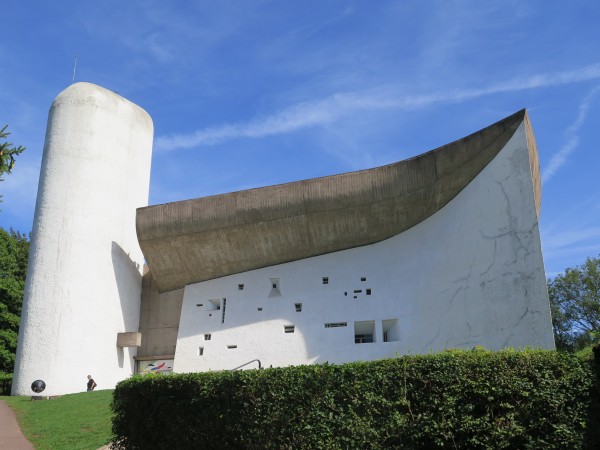
Here, there is apparent correlation between the internal spaces that define the functions of the building and its external appearance. I find such correlation lacking in most of Frank Gehry’s structures.
(All Chapelle Notre Dame au Haut, Ronchamp, France photos/ Credit: Jo Bredwell)
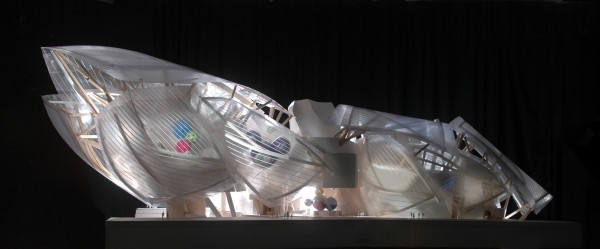
However, in contrast to what I said previously, with the recently completed Fondation Louis Vuitton in the Bois de Boulogne in Paris, Frank Gehry has created an unmistakeable correlation between function, space and construction materials. I have not yet seen this building. I know it only from the Foundation Louis Vitton app (for iPhones only) which provides a tour of the structure along with an explanation of its design and construction.
When I first saw photographs of this building, I rejoiced because there is an articulated unity between form and function. From my perspective, this is Frank Gehry’s first Post-Modernist building and perhaps the first of this genre because it was conceived, designed and constructed with Post-Modernist 21st Century materials and technology. I don’t know if Frank Gehry would appreciate this appellation; however, he could be called the first honest practitioner of what the term Post-Modernist implies.
(Feature image of La Fondation Louis Vuitton by Jean-Pierre Dalbéra, used through CC license.)

